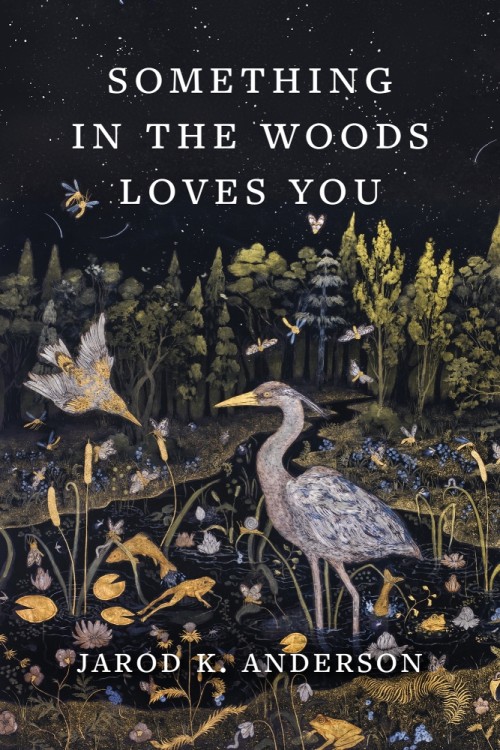by Jarod K. Anderson
Timber Press, 2024
After more than a half dozen years in academia and even longer suffering from chronic depression, Jarod K. Anderson quit his job. He was tired of often joyless work in the office and classroom. He missed being outside, observing the birds, plants, and creatures. As he writes in his memoir, Something in the Woods Loves You, Anderson figured he had three choices at this low point: medication, talk therapy, or suicide. His wife encouraged another option: taking more walks in the woods.
As a child, Anderson had appreciated nature by way of his parents. His family picked morels together in spring, and his mother fed white-tailed deer (which Anderson now recognizes as unwise) and crows. In seeking to restore his mental health and to bring back the sense of awe from his childhood, Anderson begins to spend more dedicated time watching wildlife and learning about the forest. He reads John Burroughs and remembers his grandmother’s advice about flowers, garnered from her Girl Scouts experience. Among the great blue herons, raccoons, sugar maples, and bats, he finds “kindness woven into the fabric of nature.”
Anderson, who has also published three poetry collections, writes lyrically in an effort to get readers to see “nature for what it is.” The chapters are arranged according to the seasons. He sees cooperation and community in the woods and comes to understand the lives of trees and creatures as equally important to ours. As he walks and observes, he feels more centered, although because of his depression, he admits, “I often have an uphill climb to reach gratitude, but nature helps me get there.”
In one chapter, Anderson reflects on the oft-maligned gray squirrel. “Perhaps gray squirrels are pests if you just spent $30 on birdseed in hopes of an uninterrupted month of songbird visits,” he writes. “But in the broader ecological sense they are absolutely vital.” Anderson calls these common rodents “the most effective and essential forest regenerators in North America.” Because they do not always eat the nuts they bury, these nuts often sprout into trees. In his admiration upon learning about squirrels’ role, Anderson buys a squirrel feeder as “a small token of appreciation and apology,” and he rescues one squirrel from oncoming traffic.
Something in the Woods Loves You contains other corrections to misconceptions about nature that Anderson used to believe. He untangles presumptions about spiders and bats, for example, realizing that most do not bring disease or harm and that they are not “threats,” or “ill omens.” These creatures, too, have their place in the world.
Eventually, Anderson accepts treatments he had earlier resisted; he begins taking Prozac and undergoing cognitive behavioral therapy. These help him ease the pain, but he claims they do not bring the joy and affirmation that the woods do. Today, Anderson produces the popular podcast The CryptoNaturalist, volunteers at a wildlife sanctuary near his home, and teaches his young son about nature. “When the trees call,” he writes, “I go.”


